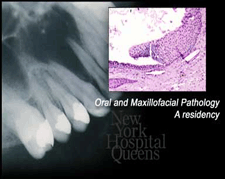المقالات
Hairy Tongue

Hairy tongue is a chronic condition in which the tiny bumps on the tongue's surface (called filiform papillae) enlarge and elongate to form hair-like projections. Normally, the surface cells of the papillae are shed on a regular basis, keeping the size of the papillae uniform in appearance. With hairy tongue, the surface cells are shed less frequently, which results in the overly long projections. The color can vary from yellowish white to brown or black. Even though it is unsightly, hairy tongue is a painless condition.
Hairy tongue can occur at any age, but it is most common in adults, especially those who are heavy smokers or who use mouthwashes regularly. The condition can also be brought on by antibiotic therapy or by the use of metronidazole (Flagyl), an antiprotozoal medication. Additionally, using antacid medications will cause pre-existing hairy tongue to turn black.
Some cases of hairy tongue are associated with extensive radiation of the head and neck for treatment of a tumor. This invariably affects the salivary glands and their secretions, but we do not yet understand why radiation seems to frequently cause hairy tongue.
conditions will result in the regression of the hairy tongue.
brushing of the tongue. These will promote shedding of the surface cells and prevent food particles from collecting between the filiform papillae.
* In some cases, we may apply a medication to the surface of the tongue that hastens the shedding of excess cells. Such
medications can be caustic and should never be self-administered.
